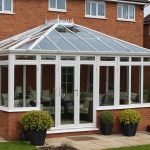Effective roof insulation is essential for UK homeowners looking to improve energy efficiency while minimizing disruption to daily life. Choosing the right insulation can significantly reduce heat loss, lower energy bills, and enhance overall comfort. With a myriad of options available, navigating this landscape can feel daunting. This guide breaks down key considerations, offers practical tips, and highlights the best types of roof insulation suited for your home. Discover insights that will help you make an informed decision, ensuring a warmer home with minimal hassle.
Overview of Roof Insulation
Roof insulation is a crucial component in maintaining energy efficiency and comfort in homes. Its primary purpose is to reduce heat loss in the winter and keep homes cooler in the summer. By acting as a barrier, roof insulation helps maintain a consistent indoor temperature, which is essential for both comfort and energy savings.
Avez-vous vu cela : Creating a Lush Vertical Garden in Your UK Flat: Maximize Limited Outdoor Space!
There are several types of roof insulation materials commonly used in the UK, each with distinct advantages. Fibreglass is popular due to its affordability and effectiveness in reducing heat transfer. Mineral wool offers excellent fire resistance and soundproofing properties, making it a versatile choice. For those seeking eco-friendly options, sheep's wool and cellulose are natural alternatives that provide good insulation while being sustainable.
The importance of roof insulation cannot be overstated. Proper insulation can significantly reduce energy bills, as it lessens the need for heating and cooling systems to work overtime. It also contributes to a home's overall environmental impact by lowering carbon emissions. Moreover, well-insulated roofs can enhance property value, making it a wise investment for homeowners. In the UK, where weather conditions can be quite variable, effective roof insulation is essential for ensuring a comfortable living environment year-round.
A découvrir également : Top Pet-Friendly Flooring Solutions for UK Homes with Indoor Pets: A Comprehensive Guide
Key Factors in Selecting Roof Insulation
When choosing roof insulation, several key factors must be considered to ensure optimal performance and value. One of the most critical aspects is thermal efficiency. The ability of insulation to resist heat flow is measured by its R-value. Higher R-values indicate better thermal performance, which is essential for maintaining a stable indoor climate and reducing energy consumption.
Cost considerations also play a significant role in the decision-making process. While the initial investment in high-quality insulation might seem substantial, it is important to weigh this against the potential for long-term savings on energy bills. Investing in efficient insulation can lead to reduced heating and cooling costs, offsetting the initial expense over time.
A comparative analysis of different insulation materials can further aid in making an informed decision. For instance, fibreglass is often chosen for its balance of cost and effectiveness, whereas mineral wool offers superior fire resistance and soundproofing. Eco-conscious homeowners might opt for natural materials like sheep's wool or cellulose, which, while potentially more expensive upfront, provide sustainable benefits. By evaluating these factors, homeowners can select the most suitable insulation for their specific needs and circumstances.
Eco-Friendly Roof Insulation Options
In the UK, the move towards sustainable insulation is gaining momentum, driven by the desire to reduce environmental impact. Eco-friendly materials such as sheep's wool, cellulose, and recycled cotton are popular choices. These materials not only offer excellent thermal performance but also align with green building practices by being renewable and biodegradable.
Choosing sustainable insulation provides several benefits. Homeowners can enjoy reduced energy bills due to improved thermal efficiency, while also contributing to a lower carbon footprint. Moreover, these materials often offer enhanced indoor air quality, as they are free from harmful chemicals present in some conventional insulations.
To ensure that insulation products meet eco-friendly standards, look for certifications like the Energy Saving Trust Recommended or the British Board of Agrément (BBA). These certifications indicate compliance with rigorous environmental and performance criteria. Additionally, products that carry the European Union's Ecolabel or are part of the Forest Stewardship Council (FSC) are recognised for their sustainability credentials.
By opting for eco-friendly materials, homeowners not only invest in their property's energy efficiency but also promote green building practices, which support a healthier planet for future generations.
Installation Methods and Their Impact
Choosing the right roof insulation installation method can significantly affect its performance and longevity. Common methods include spray foam and batts. Spray foam offers excellent coverage and air sealing, making it a popular choice for those seeking high thermal efficiency. However, it requires professional handling due to its technical application process. Batts, usually made from fibreglass or mineral wool, are more straightforward to install and can be a viable option for DIY enthusiasts.
When considering professional vs DIY installation, it is crucial to weigh the pros and cons. Professional installation ensures precision and compliance with building regulations, reducing the risk of errors that could compromise insulation effectiveness. It is particularly beneficial for complex projects or when using materials like spray foam. On the other hand, DIY installation can be cost-effective for simple projects, especially when using easily handled materials like batts.
Before starting the installation, preparing your home is essential. Ensure the roof space is clean and free of obstructions. Check for any existing damage or leaks that need repair. Adequate ventilation is also vital to prevent moisture build-up, which can affect insulation performance. Proper preparation can enhance the success of your insulation project.
Minimizing Disruption During Installation
When planning for roof insulation, effective Disruption Management is essential to ensure a smooth process. Start by scheduling your installation during a time that minimizes household disruption. Consider coordinating with contractors to choose a period when you can temporarily relocate or when family activities are least affected.
Installation Planning is crucial. Communicate clearly with your contractors to set realistic expectations about the timeline and potential disturbances. This dialogue helps in understanding the scope of work and any specific requirements, such as noise levels or areas of restricted access.
Homeowners can follow these tips to prepare their homes for insulation work:
- Clear the area: Remove any obstacles from the attic or roof space to allow easy access for installers.
- Protect belongings: Cover furniture and valuables to shield them from dust and debris.
- Inform neighbours: Notify them of the work schedule to maintain good relations and manage expectations.
- Secure pets: Keep them in a safe area away from the work zone to prevent stress or accidents.
By following these steps and maintaining open communication, homeowners can significantly reduce the inconvenience associated with insulation projects, ensuring a more seamless experience.
FAQs and Expert Opinions
Understanding roof insulation can be daunting, but addressing common queries can simplify the process. Here, we delve into frequently asked questions and expert insights.
What is the best type of roof insulation for my home? The optimal choice depends on various factors, including climate, budget, and specific needs. Experts often recommend fibreglass for its cost-effectiveness and mineral wool for its fire resistance and soundproofing capabilities. For eco-conscious homeowners, natural options like sheep's wool and cellulose are ideal.
How much can I save on energy bills with roof insulation? Proper insulation can reduce heating and cooling costs by up to 20%. This varies based on insulation quality and home size, but the investment typically pays off over time.
Are there any misconceptions about roof insulation? A common myth is that thicker insulation is always better. However, the key is the R-value, which measures thermal resistance. Higher R-values indicate better performance, regardless of thickness.
Industry experts stress the importance of professional installation for optimal results. While DIY methods might seem appealing, they caution against potential errors that could compromise effectiveness. Seeking expert advice ensures compliance with building regulations and maximises energy efficiency.












